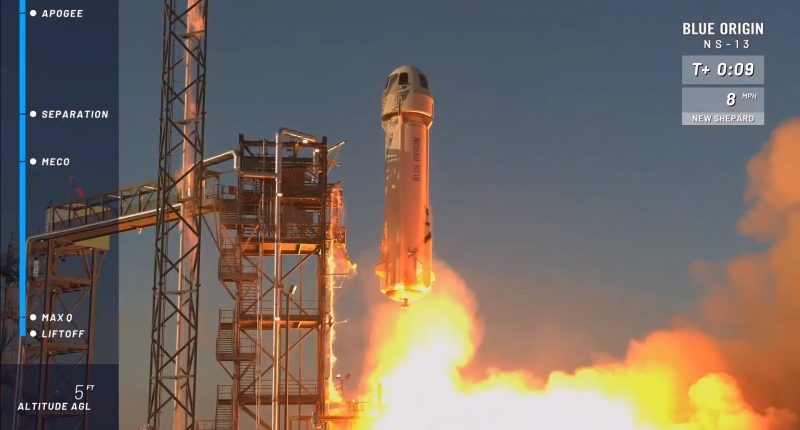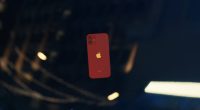Blue Origin, Jeff Bezos’s answer to Elon Musk’s SpaceX, successfully completed the test launch of its New Shepard reusable suborbital rocket (NS-13). The rocket carried NASA’s new precision landing system for testing.
The rocket was originally scheduled for launch on 24 September (Thursday). However, due to a power supply issue, it was delayed to today, and managed a successful launch at 8:35 a.m. CDT from Blue Origin’s West Texas launch facility.
The New Shepard carried a dozen payloads to space and back for testing, including a few firsts for the space agency, such as Deorbit, Descent and NASA’s ‘Safe and Precise Landing – Integrated Capabilities Evolution’ (SPLICE) system.
The landing system developed by NASA is made up of lasers, an optical camera, a computer, sensors, and algorithms that can help identify potential hazards while landing on the lunar surface. The Lunar landing sensor, being developed for NASA’s Artemis mission, collects and processes data from the sensors to identify the tough terrains of the Moon and adjust the spacecraft’s maneuver accordingly. NASA aims to use this technology to help spacecrafts land autonomously on Moon and hopefully, on other planets like Mars.
Moreover, it was also the first time a Blue Origins rocket carried the payload on its exterior rather than in the interior of the capsule. This was done because the landing system from Nasa had to be mounted on the exterior, and thus, Blue Origins had to adapt according to the demand. However, now that Blue Origins has achieved this feat, the company claims that this will help in future high-altitude sensing, sampling and exposure payloads.
Today’s mission was the seventh successful launch for this particular NS-13 rocket and 13th overall in the New Shepard line of rockets. The NS-13 is also aimed to carry passengers in the future with a crew capsule onboard, but that’s still a long way down the road (at least we think it is).
Today’s mission also included payloads of experiments from Johns Hopkins University Applied Physics Laboratory, Southwest Research Institute, NASA Flight Opportunities, Space Lab Technologies, University of Florida, Space Environment Technologies, and mu Space Corp. The rocket also took postcards collected from students across the world with some of them carrying a special NASA Artemis stamp.
The Tech Portal is published by Blue Box Media Private Limited. Our investors have no influence over our reporting. Read our full Ownership and Funding Disclosure →






